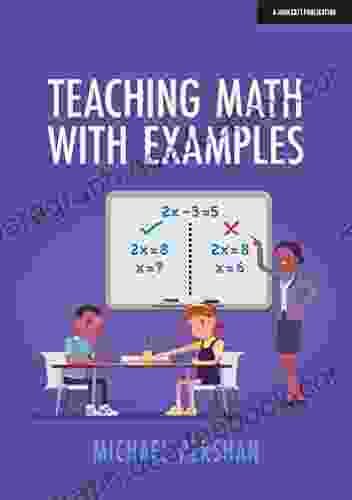Guide to Analyzing and Interpreting ECERS Data: Unlocking Early Childhood Program Quality

The Early Childhood Environment Rating Scale (ECERS) is a widely used observational tool for assessing the quality of early childhood programs. It provides a comprehensive snapshot of the program's physical environment, interactions between staff and children, and curriculum and activities. Analyzing and interpreting ECERS data is crucial for early childhood professionals to identify areas for improvement and ensure high-quality learning environments. This guide will delve into the process of analyzing and interpreting ECERS data, providing insights into the key indicators of program quality.
Understanding the ECERS
The ECERS is divided into seven scales, each focusing on a specific aspect of program quality:
5 out of 5
| Language | : | English |
| File size | : | 8814 KB |
| Text-to-Speech | : | Enabled |
| Screen Reader | : | Supported |
| Enhanced typesetting | : | Enabled |
| Word Wise | : | Enabled |
| Print length | : | 128 pages |
- Space and Furnishings
- Personal Care Routines
- Language-Reasoning
- Activities
- Interactions
- Program Structure
- Parents and Staff
Each scale is further broken down into subcategories, with specific indicators to observe and rate. The rating system ranges from 1 to 7, with higher scores indicating a stronger focus on that particular aspect of quality.
Analyzing ECERS Data
Once the ECERS observation is conducted, the data needs to be analyzed to identify strengths and weaknesses. The following steps can help guide the analysis:
- Calculate Total and Scale Scores: Add up the scores for each subcategory within a scale to calculate the total scale score. The total ECERS score is obtained by summing up all the scale scores.
- Identify Strengths and Weaknesses: Review the subcategories where the program scored well and those where it scored poorly. This will highlight the areas where the program excels and those that need improvement.
- Examine Patterns and Trends: Look for patterns or trends across the scales. High scores in one scale but low scores in another can indicate a disparity in program quality.
- Analyze Relationships: Explore the relationships between different scales. For example, high scores in the Interactions scale may be associated with higher scores in the Activities scale.
Interpreting ECERS Data
The interpretation of ECERS data involves understanding the implications of the scores and identifying corresponding recommendations for improvement.
- High Total Score (6 or 7 on all scales): Indicates an exceptional learning environment with strong practices in all areas of quality.
- Average Total Score (4 or 5 on most scales): Suggests a program with some strengths and some areas for growth.
- Low Total Score (3 or less on multiple scales): May indicate significant areas of concern and a need for comprehensive improvement.
Recommendations for Improvement
Based on the data analysis, specific recommendations can be made to enhance program quality:
- Increase Space and Furnishings: Provide more indoor and outdoor play space, ensure adequate lighting and ventilation, and ensure furnishings are age-appropriate.
- Enhance Personal Care Routines: Establish consistent and respectful routines, provide ample time for diaper changing and toileting, and provide nutritious meals and snacks.
- Promote Language-Reasoning: Engage children in conversation, provide opportunities for storytelling and book reading, and introduce science and math concepts.
- Expand Activities: Offer a variety of developmentally appropriate activities, allow children to make choices, and encourage exploration and creativity.
- Improve Interactions: Foster positive and supportive relationships between staff and children, encourage active listening and respect, and provide guidance and praise.
- Strengthen Program Structure: Develop clear and consistent policies and procedures, ensure smooth transitions between activities, and establish a positive learning climate.
- Engage Parents and Staff: Promote open communication with parents, involve parents in program activities, and provide opportunities for staff professional development.
Analyzing and interpreting ECERS data is an essential step in evaluating and improving the quality of early childhood programs. By carefully examining the scores and identifying strengths and weaknesses, early childhood professionals can gain valuable insights and develop targeted recommendations for improvement. Regular ECERS observations and data analysis can contribute to a continuous cycle of quality enhancement, ensuring that children experience the highest quality learning environments.
5 out of 5
| Language | : | English |
| File size | : | 8814 KB |
| Text-to-Speech | : | Enabled |
| Screen Reader | : | Supported |
| Enhanced typesetting | : | Enabled |
| Word Wise | : | Enabled |
| Print length | : | 128 pages |
Do you want to contribute by writing guest posts on this blog?
Please contact us and send us a resume of previous articles that you have written.
 Book
Book Page
Page Chapter
Chapter Genre
Genre Reader
Reader Library
Library Magazine
Magazine Newspaper
Newspaper Bookmark
Bookmark Shelf
Shelf Foreword
Foreword Preface
Preface Annotation
Annotation Manuscript
Manuscript Scroll
Scroll Codex
Codex Tome
Tome Library card
Library card Biography
Biography Reference
Reference Encyclopedia
Encyclopedia Thesaurus
Thesaurus Narrator
Narrator Character
Character Resolution
Resolution Catalog
Catalog Borrowing
Borrowing Stacks
Stacks Archives
Archives Periodicals
Periodicals Scholarly
Scholarly Reserve
Reserve Reading Room
Reading Room Rare Books
Rare Books Literacy
Literacy Thesis
Thesis Reading List
Reading List Book Club
Book Club Theory
Theory Textbooks
Textbooks Steven E Siry
Steven E Siry Elaine Rosendorf
Elaine Rosendorf Stephen Budiansky
Stephen Budiansky Kathleen Mapes
Kathleen Mapes Emma Moreau
Emma Moreau Catherine Allgor
Catherine Allgor C A J Coady
C A J Coady Kelli Jo Ford
Kelli Jo Ford Lauren Harriman
Lauren Harriman Harry Turtledove
Harry Turtledove David Mager
David Mager Kristin Runyan
Kristin Runyan Mark Helprin
Mark Helprin Ethan Mordden
Ethan Mordden Romulus Hillsborough
Romulus Hillsborough Antonio Tonti
Antonio Tonti Lauren Coyle Rosen
Lauren Coyle Rosen Tina Orter
Tina Orter Mike Morgan
Mike Morgan Gundi Gabrielle
Gundi Gabrielle
Light bulbAdvertise smarter! Our strategic ad space ensures maximum exposure. Reserve your spot today!

 Shannon SimmonsTrump, China, and the New Struggle for Global Mastery: A Detailed Analysis
Shannon SimmonsTrump, China, and the New Struggle for Global Mastery: A Detailed Analysis
 Corey GreenUnlocking Mathematical Mastery: A Comprehensive Guide to Teaching Math with...
Corey GreenUnlocking Mathematical Mastery: A Comprehensive Guide to Teaching Math with... Matt ReedFollow ·19.6k
Matt ReedFollow ·19.6k Earl WilliamsFollow ·4.4k
Earl WilliamsFollow ·4.4k Ruben CoxFollow ·7.6k
Ruben CoxFollow ·7.6k Herbert CoxFollow ·3.2k
Herbert CoxFollow ·3.2k Ricky BellFollow ·10.5k
Ricky BellFollow ·10.5k Aaron BrooksFollow ·16k
Aaron BrooksFollow ·16k Branden SimmonsFollow ·2.2k
Branden SimmonsFollow ·2.2k William GoldingFollow ·17.9k
William GoldingFollow ·17.9k

 Ricky Bell
Ricky BellThe Marriage: An Absolutely Jaw-Dropping Psychological...
In the realm of...

 Ray Blair
Ray BlairDiscover the Enchanting Charm of Budapest and Its...
Nestled in the heart of...

 Tyrone Powell
Tyrone PowellHuddle: How Women Unlock Their Collective Power
Huddle is a global movement that empowers...

 Grayson Bell
Grayson BellThe Coin Story of the Holocaust: A Symbol of Hope and...
In the depths of the...

 Virginia Woolf
Virginia WoolfFolklore Performance and Identity in Cuzco, Peru: A...
Nestled amidst...

 Dylan Mitchell
Dylan MitchellThe Enduring Love Story of Héloïse and Abélard: A Tale of...
An Intellectual Passion In the heart of...
5 out of 5
| Language | : | English |
| File size | : | 8814 KB |
| Text-to-Speech | : | Enabled |
| Screen Reader | : | Supported |
| Enhanced typesetting | : | Enabled |
| Word Wise | : | Enabled |
| Print length | : | 128 pages |








